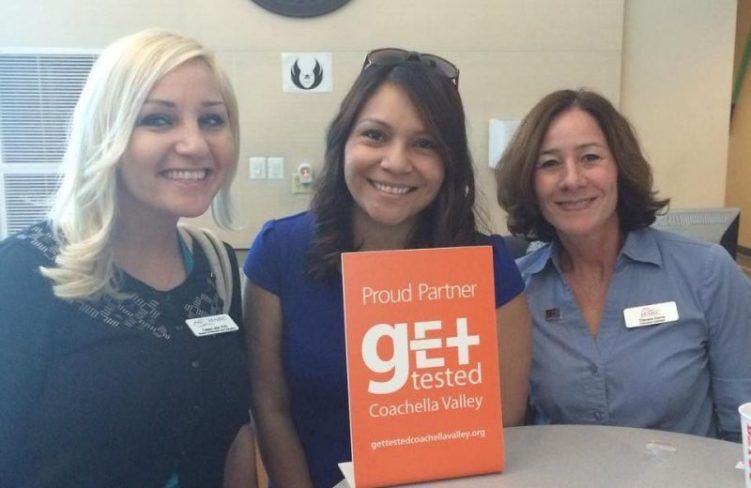Fighting AIDS with needs assessments
I apologize for missing my blog post last week! One of my furbabies had a tumor removed from her leg, and so we’ve been busy supervising her and trying to convince her not to do her usual 5-feet-vertical-jumps just yet to avoid bursting her stitches. It’s rough on us all.

Now, enough pitiful cat photos, on to the blog!
Previously, when I mentioned needs assessments, I talked about very specific needs assessments, the type an organization might do before implementing a program. But there’s also a broader type of needs assessment that we are actively involved in, known as a Community Health Needs Assessment (CHNA). CHNAs are designed to assess the community as a whole, and to identify what needs exist. CHNAs can be used by many, many organizations in the community to design and implement services.
HARC was actually founded because of a need for a CHNA in our particular region. The Coachella Valley, where we’re located, is somewhat geographically isolated. We’re in eastern Riverside County in Southern California. Our county is bigger than several U.S. states. Our portion of the county is ringed by mountains, so it’s somewhat like living on an island; people don’t leave the Valley for services unless they have to. Throw in some unique demographic factors, a serious lack of care providers, and basically, county-level data doesn’t adequately tell our story. Ten years ago, 30 organizations came together over this concern. HARC was created to address that issue, and it was determined that the way to address it was for HARC to conduct a survey of the health of the region every three years. HARC would then provide that information back to the community to use for things like strategic planning, justifying funding requests, and program design, among others.
The survey content is guided by the community, and covers a wide range of topics, including healthcare access, utilization, mental health, major disease, health behaviors, and more. So far, we’ve conducted the survey four times: 2007, 2010, 2013, and 2016. Today I want to highlight an amazing example of how one organization has taken the data we provide and run with it and really made a difference in people’s lives: Desert AIDS Project (D.A.P.).
The National Picture of HIV/AIDS
D.A.P. provides care, prevention, and advocacy related to HIV and AIDS. Over 1.1 million people in the United States are living with HIV, and additional 50,000 people are infected with HIV each year in the United States (CDC, 2013). Over 13,000 people per year still die from AIDS, bringing the death toll to over 658,000 people in the U.S. alone (www.AIDS.gov)
The HIV epidemic is primarily spread because people don’t know they have the virus. Approximately 70% of sexually-transmitted HIV cases are attributed to people who are unaware of their HIV-positive status (Marks, 2006). When a person with HIV tests positive and is linked to care, they receive antiretroviral therapy. Research has shown that individuals on antiretroviral therapy are 96% less infectious than their counterparts without medication (Cohen et al., 2011). Thus, testing the public and linking those who test positive to care is a critical step in eliminating HIV.
Local Data, Local Approach
In our first survey, in 2007, there were no questions on our survey about HIV testing. By the time our second survey happened, in 2010, D.A.P. was on board to rectify that; at their urging, we added a question for adults about whether or not they had ever been tested for HIV. Results came back that a shocking 67% of adults had never been tested for HIV. That means more than 2/3 of our region had no idea if they had HIV or not. D.A.P. sprung into action, and used this information to strategically plan how to address it. In order to address this epidemic, everyone needed to be tested for HIV. D.A.P. put into motion a massive, three-year, $5 million public health campaign known as Get Tested Coachella Valley (GTCV). It launched at the same time as HARC’s next survey, in early 2013. The campaign focuses on reducing stigma, providing free, convenient HIV testing out in the community, and working with providers to make sure HIV testing becomes routine, like testing for high blood pressure or cholesterol. Another key component of the campaign is that they work really hard to make sure everyone who tests positive is connected to care.
HARC’s 2013 survey demonstrated that D.A.P.’s outreach efforts were already making a difference. The percent of adults who’d never been tested for HIV had dropped significantly to 55%. But there remained a looooong way to go.
GTCV’s campaign is amazing and groundbreaking, and you should read more about it here. HARC is fortunate to be both a community partner and the program evaluator.
HARC’s next community health needs assessment results will be available in January 2017. I strongly anticipate that GTCV’s activities over the past three years will have made a dent. I firmly believe that the percent of local adults who don’t know their HIV status (i.e., those who have never been tested) will be well below 50% this time around.
D.A.P. is an amazing example of how a community based organization can and should interaction with community health needs assessments. At our first survey in 2007, there was no information available. To address that, D.A.P. quickly got on board in 2010. As a result of the collaboration, we were able to get the data to demonstrate that there was a significant need. The results were shocking; D.A.P. used them to rally supporters and raise over $4 million of the $5 million needed for the campaign. Results in 2013 showed an improvement already, and I am certain that 2016 will show a dramatic improvement as a result of the campaign, which will attest to what an impact they’ve made.
Most importantly, so far in the campaign, more than 350 people have tested positive and been connected to care. People with HIV who are in treatment see their life expectancy increase from 32 to 71. That’s 39 extra years per person—meaning D.A.P.’s efforts have saved more than 13,600 years of life in just two years of the campaign. HARC is so proud that our data has helped such a meaningful cause!
